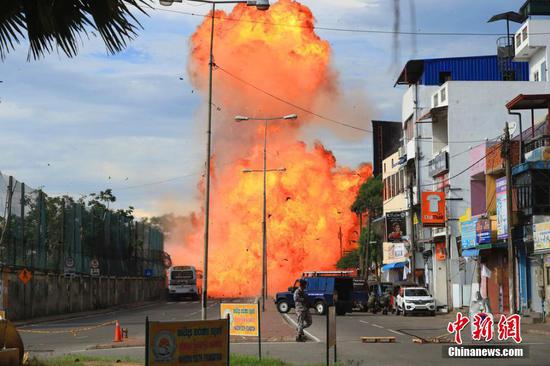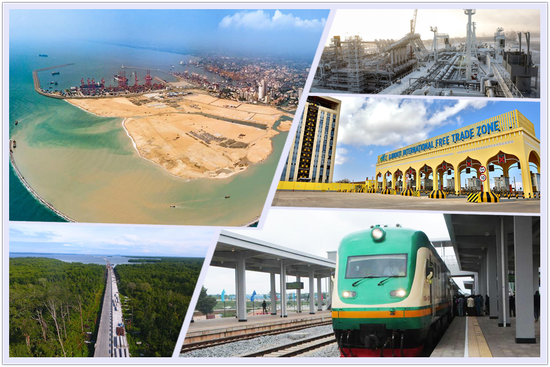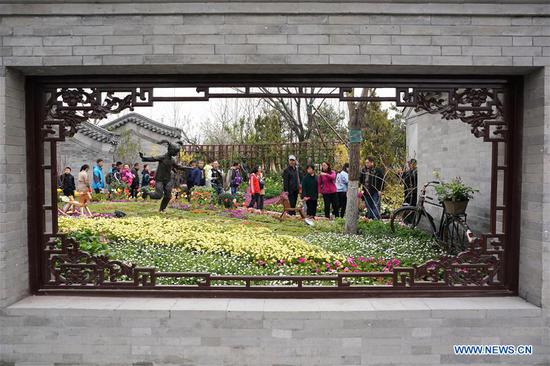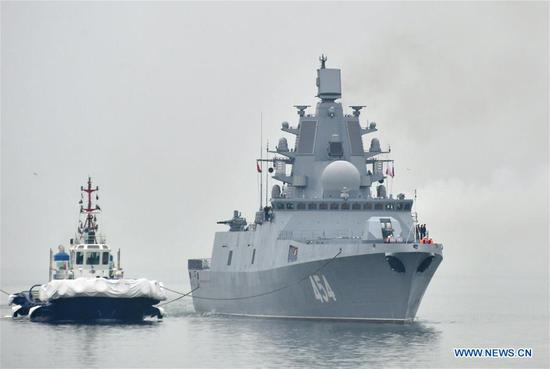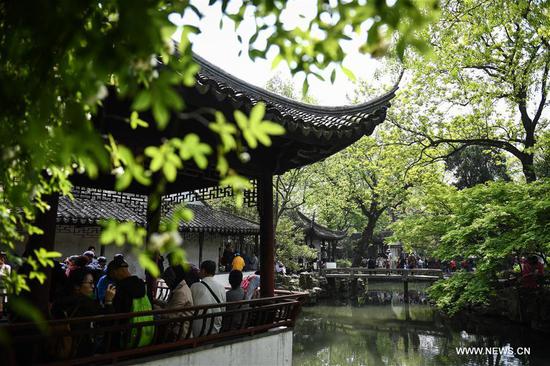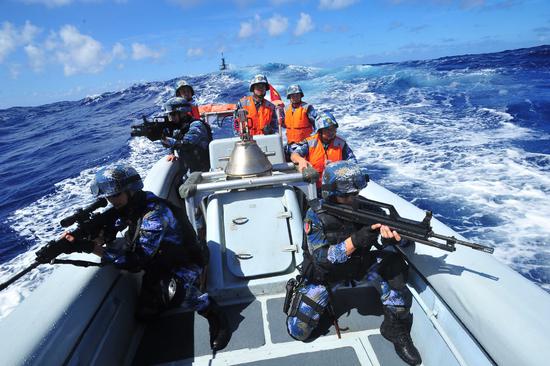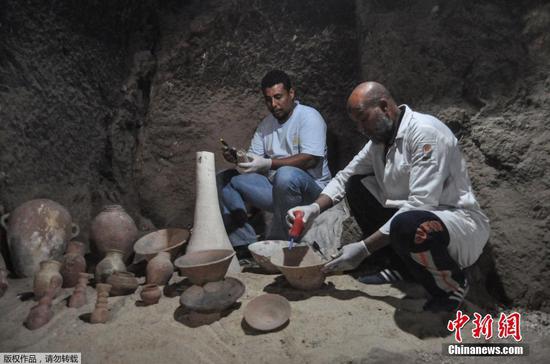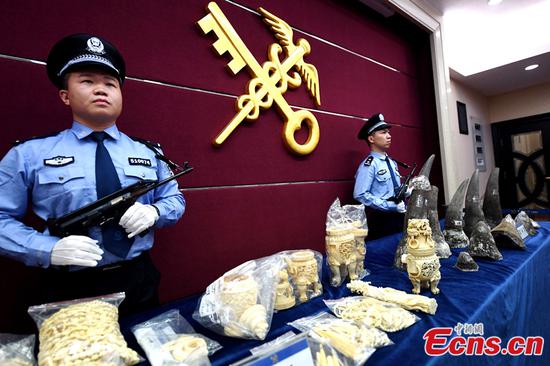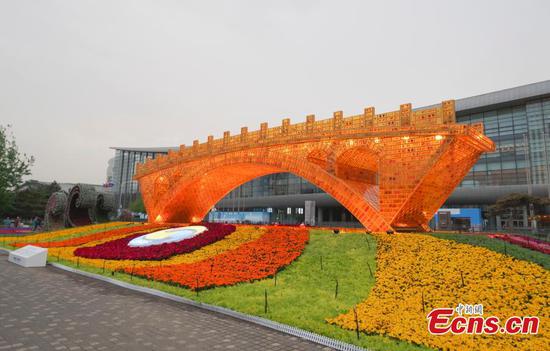Noy Sonemany works at the China-Laos railway construction site in northern Laos.
Sonemany, a builder before the job, has grown into a skilled welder and was conferred "railway craftsman." With a monthly income of about 460 U.S. dollars, the 26-year old said he is happy with the job.
Sonemany is among millions around the world benefiting from cooperation projects within the framework of the Belt and Road Initiative (BRI). Ever since the initiative was first proposed by Chinese President Xi Jinping in 2013, 126 countries and 29 international organizations have signed BRI agreements with China.
Under the BRI, China has not only helped others develop their economy and improved the livelihood of their people, but also offered a platform where all countries can work together for common prosperity.
BURGEONING COOPERATION PROJECTS
The China-Laos Railway Project is just one of the many cooperation projects that the BRI has created.
Once completed in 2021, the 414 km-railway will run from Mohan-Boten border gate in northern Laos to the capital Vientiane with an operating speed of 160 km per hour, turning the landlocked country into a land-linked hub.
The Colombo International Container Terminals in western Sri Lanka, co-managed by China's CM Port and the Sri Lanka Ports Authority since 2014, has turned the Colombo Port into one of the fastest growing ports in the global market. According to the international rating agency Alphaliner, the port had the highest container growth in the first half of 2018.
In the initial five years of its implementation, the China-Pakistan Economic Corridor had completed several energy projects which have solved Pakistan's headache of blackouts while facilitating the country's economic development by providing sufficient electricity to its industries.
The China Railway Express, an artery of international trade, now links 59 cities in China with 50 cities in 15 European countries, with the cumulative number of trips reaching 14,000 by the end of February.
France has agreed to jointly promote BRI-related third-party market cooperation with China, while Italy and China have signed a memorandum of understanding on jointly advancing the initiative.
It turns out that the BRI, with great potential to benefit both developing and developed economies, has become more and more appealing to the world.
The latest studies by the World Bank and other international institutions suggested that cooperation under the BRI will cut the costs of global trade by 1.1 to 2.2 percent and contribute at least 0.1 percent of global growth in 2019.
"DEBT TRAP" FALLACY
As the BRI is gaining growing global support, some Western politicians and media accuse China of setting up a "debt trap." These accusations have been refuted by officials and experts worldwide.
Research published in January by trade credit insurer Euler Hermes said the BRI will add 0.3 percent to global trade and 0.1 percent to global growth, and countries involved will see higher trade volumes.
The accusations against China are "complete nonsense," as benefits generated from infrastructure construction will far exceed the investments, said Aboubaker Omar Hadi, chairman of Djibouti Ports and the Free Zone Authority.
A total of 41 billion U.S. dollars have been recorded in exports and imports through Djibouti ports, which cannot be achieved without developing proper infrastructure, Hadi said.
The BRI "offers tremendous opportunities for Cambodia, and the Royal Government has clearly indicated its commitment to the project," said United Nations Development Program Resident Representative Nick Beresford.
It is "not going to create a debt trap for Cambodia," said Hem Vanndy, undersecretary of state for the Cambodian Economy and Finance Ministry.
Keshmeer Makun, a lecturer at Fiji's University of the South Pacific, said "it is important to know that China often takes into consideration the ability to meet foreign debt obligation and solvency constraint of receiving countries, hence, preventing heavy debt burden."
"The Chinese-funded projects not only get the right costing and quality, but also bring the preferred social and economic assistance to the people," Makun said.
Speaking of Sri Lanka's debt problem, local scholar Dr. Dushni Weerakoon and economics professor at Australia's Monash University Sisira Jayasuriya wrote in an article that it had very little to do with Chinese loans which comprise merely about 10 percent of Sri Lanka's total foreign debt.
As to the Montenegro highway project, the International Monetary Fund said such construction has already given the country a shot in the arm, as "after expanding 2.9 percent in 2016, the economy grew 4.4 percent in 2017," and predicted Montenegro will generate "a primary fiscal surplus of 4.5 percent of GDP (gross domestic product) by 2020."
The allegations regarding the BRI are "misguided and incorrect," said Khairy Tourk from the Stuart School of Business of the Illinois Institute of Technology in Chicago.
CONNECTIVITY FOR COMMON PROSPERITY
The Belt and Road is about sharing, Tourk said.
Indeed, the BRI, by advancing globalization in a more open, inclusive and balanced manner, aims to build a trade and infrastructure network connecting the world based on mutual respect, equality and mutual benefit.
In 2018, when addressing a symposium marking the fifth anniversary of the BRI, Xi noted it is an open and inclusive initiative rather than an exclusive bloc or "China club."
While the initiative has proved a real boon to countries along the Belt and Road through bilateral cooperation projects, the international community has also started to recognize its significance in enhancing connectivity to jointly incubate new growth businesses and address unbalanced development.
Speaking of the BRI, Djibouti official Hadi said he is "expecting stronger interconnection between Africa and the rest of the world."
Central Asia is basically landlocked in terms of its trade with the rest of the world. By increasing connectivity, a "trendy" idea reflected in the BRI, this region will definitely benefit economically, said Fabienne Bossuyt, assistant professor at Belgium's Ghent University.
For Fijian lecturer Makun, the BRI has helped the Pacific island countries attract more foreign investment from neighboring economies.
"Indeed, China's presence and assistance have also motivated our regional neighbors such as Australia, New Zealand and the U.S. to step up. It is a good thing that such countries have made their commitments to boost the Pacific region's development," he said.
In comparison to unilateral, protectionist policies, China offers a chance for "peaceful and common prosperity" among countries, said Francesco Maringio, an Italian China expert.
The BRI's "emphasis on infrastructure and connectivity lays the best possible foundations for promoting all-round, comprehensive economic development and improvement of people's livelihood in the future," said Keith Bennett, vice chairman of Britain's 48 Group Club.
It is "an operating platform for how nations would work together ... and resolve their differences amicably through negotiation, through give-and-take, through win-win solution," said William Jones, Washington bureau chief of the U.S. publication Executive Intelligence Review.
"That has to be the wave of the future," he said.









